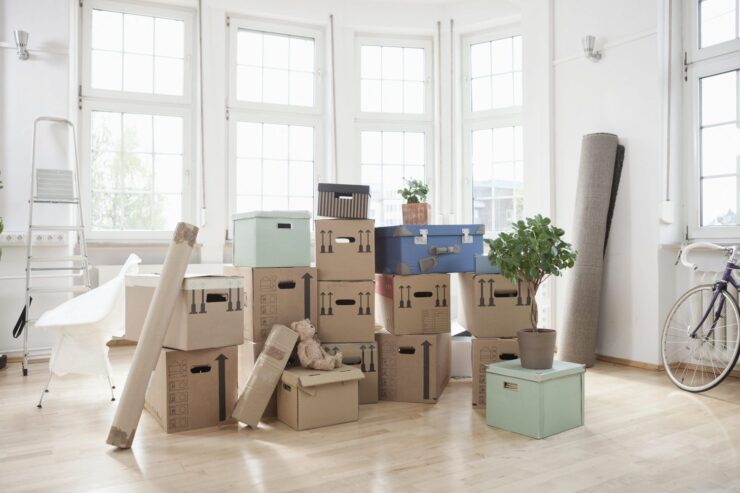Moving to a new home can be a daunting task for anyone, but for people with disabilities, it can pose additional challenges. The process requires careful planning and organization to ensure that every aspect is tailored to meet individual needs. The transition can also bring about emotional stress, considering the anxiety of adapting to a new environment. This guide aims to provide practical and valuable advice for packing, preparing, and moving with disabilities, placing paramount importance on thoughtful planning and meticulous preparation.
A well-structured moving plan can make all the difference. It can help manage the workload, prevent overlooked details, and significantly reduce stress levels. Furthermore, it enables the accommodation of unique requirements that arise due to different forms of disabilities. From physical impairments requiring changes in infrastructure to cognitive disabilities needing special attention to routine and familiarity, planning and preparation can play a vital role in a seamless transition.
Assessing Individual Needs

An effective moving plan begins with a thorough assessment of individual needs. Start by making a comprehensive list of specific requirements, potential challenges, and solutions. This process requires careful introspection and a realistic understanding of the disability in the context of moving.
Consider aspects such as: How does your disability affect your daily life? What modifications do you need to navigate your home comfortably? What steps can you take independently, and where might you need assistance? What is your stamina like for tasks like packing, unpacking, or moving boxes? Will certain noises or changes in routine trigger anxiety or distress? How quickly do you adapt to new environments?
Creating a Moving Timeline
Once you’ve assessed your needs, it’s time to create a moving timeline. Breaking down the process into manageable tasks can make the process less overwhelming. Start early, estimate the time required for each task, and set deadlines for them. Remember to be realistic with your timelines, accounting for rest days to prevent exhaustion.
The timeline can be broken down into phases like research (finding a suitable moving company, planning home modifications), preparation (decluttering, packing, coordinating help), moving day, and settling in (unpacking, setting routines). Each of these phases might require different levels of energy, assistance, and time.
Finding the Right Moving Company

Selecting a moving company experienced in working with people with disabilities can greatly reduce the burden. They can bring understanding, empathy, and knowledge to the process. Look for companies that demonstrate experience in this area, such as easypeasyremovals.com.au, and ask for recommendations from trusted sources, like friends, family, or disability advocacy groups.
When contacting potential companies, don’t hesitate to ask questions about their experience with disability-related moves. What measures do they have in place to accommodate your needs? Can they provide references from customers with similar needs? In addition to experience, consider their professionalism, reviews, licenses, and insurance coverage.
Decluttering and Organizing
Before packing, declutter and organize your belongings. This can reduce the number of items to be moved and make the packing process more efficient. It also provides an opportunity to rethink your belongings and keep only what is necessary or brings you joy.
Go room by room, and categorize items into things you want to keep, donate, sell, or discard. It might be beneficial to have a friend or family member assist with this process, especially for sorting through heavy items or reaching items stored high up. Remember, it’s not a race. Take your time to sort through your belongings, taking breaks as needed.
Organizing your items can also help you in the packing phase. For example, grouping books together, categorizing kitchen utensils, or separating out-of-season clothes. This will simplify packing, make your boxes easier to sort through when unpacking, and save time and energy in the long run.
Packing Strategies

When packing, efficiency and accessibility are key. Begin with items you don’t use daily, and gradually move towards daily use items. Use quality packing materials to protect your belongings, and label all boxes clearly, noting the room they belong to and a brief description of the contents. This not only helps you but is also crucial information for the movers and anyone assisting with unpacking.
For people with mobility impairments, consider packing an “essentials box” that contains items like medication, chargers, toiletries, and snacks to keep handy during the move. If you have cognitive or sensory disabilities, packing a box with familiar objects or comfort items can be soothing in the midst of change.
Adapting the New Home
Adapting your new home to meet your specific needs is a crucial step. Depending on your disability, this could mean installing ramps, lifts, or grab bars, widening doorways, or modifying kitchen and bathroom setups. It’s recommended to start these modifications before the move, if possible, to ensure the space is ready and comfortable to live in from day one.
Planning these adaptations might require professional assistance. Occupational therapists can assess your needs and suggest modifications. They consider various factors like your disability, lifestyle, and the physical layout of the new home.
Communicating with the Moving Team

Once you’ve hired a moving company, effective communication is vital. Inform them about your specific requirements and provide clear instructions about handling and placing your items. Ensure they are aware of your disability and adapt their approach accordingly, whether it’s taking extra care with certain items or ensuring noise levels are kept to a minimum.
Coordinating Assistance
While professional movers are a tremendous help, the support of friends and family can be invaluable. Coordinate with your network in advance for help with tasks such as packing, organizing, or babysitting, if necessary. Remember, it’s okay to ask for help and lean on your community during this time.
Ensuring Accessibility During the Move
Accessibility during the move is paramount. Whether it’s ensuring the pathways are clear of boxes, installing temporary ramps, or arranging for an overnight stay if the move makes your home temporarily inaccessible, make sure both your old and new homes are navigable during the process.
Addressing Emotional Aspects
Moving can bring emotional upheaval. Recognize this and take steps to manage stress. Keep a self-care routine, stay connected with loved ones, and don’t hesitate to seek professional help if the anxiety becomes overwhelming. It’s okay to have mixed feelings; moving is a big change!
Settling into the New Home

Lastly, settling into your new home might take time. Be patient with yourself. Start by arranging your space to mimic familiarity, establish routines, and slowly explore your new neighborhood. Reach out to local support services if necessary, and remember that it’s okay to take time to adjust. With careful planning and support, you can make your new house a comfortable, accessible home.

